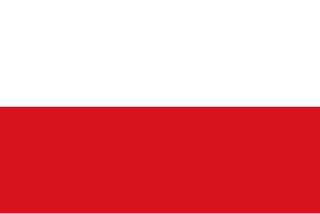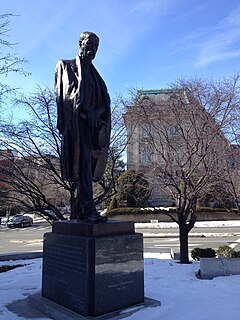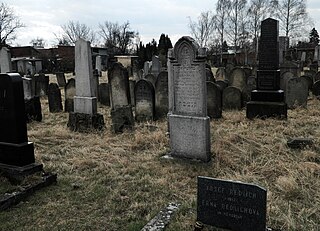
Bohemia is the westernmost and largest historical region of the Czech Republic. Bohemia can also refer to a wider area consisting of the historical Lands of the Bohemian Crown ruled by the Bohemian kings, including Moravia and Czech Silesia, in which case the smaller region is referred to as Bohemia proper as a means of distinction.

Moravia is a historical region in the east of the Czech Republic and one of three historical Czech lands, with Bohemia and Czech Silesia.
The Czechs, or the Czech people, are a West Slavic ethnic group and a nation native to the Czech Republic in Central Europe, who share a common ancestry, culture, history, and the Czech language.
The First Czechoslovak Republic emerged from the collapse of the Austro-Hungarian Empire in October 1918. The new state consisted mostly of territories inhabited by Czechs and Slovaks, but also included areas containing majority populations of other nationalities, particularly Germans (22.95 %), who accounted for more citizens than the state's second state nation of the Slovaks, Hungarians (5.47 %) and Ruthenians (3.39 %). The new state comprised the total of Bohemia whose borders did not coincide with the language border between German and Czech. Despite initially developing effective representative institutions alongside a successful economy, the deteriorating international economic situation in the 1930s gave rise to growing ethnic tensions. The dispute between the Czech and German populations, fanned by the rise of National Socialism in neighbouring Germany, resulted in the loss of territory under the terms of the Munich Agreement and subsequent events in the autumn of 1938, bringing about the end of the First Republic.

Although the Kingdom of Bohemia, both of the Lusatias, the Margraviate of Moravia, and Silesia were all under Habsburg rule, they followed different paths of development. Moravians and Silesians had accepted the hereditary right of the Austrian Habsburgs to rule and thus escaped the intense struggle between native estates and the Habsburg monarchy that was to characterize Bohemian history. In contrast, the Bohemian Kingdom had entrenched estates that were ready to defend what they considered their rights and liberties. The Habsburgs pursued a policy of centralization and conflict arose, which was further complicated by ethnic and religious issues.

The Austro-Hungarian Compromise of 1867 established the Dual Monarchy of Austria-Hungary.

Prague Castle is a castle complex in Prague, Czech Republic, built in the 9th century. It is the official office of the President of the Czech Republic. The castle was a seat of power for kings of Bohemia, Holy Roman emperors, and presidents of Czechoslovakia. The Bohemian Crown Jewels are kept within a hidden room inside it.

František Palacký was a Czech historian and politician, the most influential person of the Czech National Revival, called "Father of the Nation".

The First Czechoslovak Republic, often colloquially referred to as the First Republic, was the first Czechoslovak state that existed from 1918 to 1938, a union of ethnic Czechs and Slovaks. The country was commonly called Czechoslovakia, a compound of Czech and Slovak; which gradually became the most widely used name for its successor states. It was composed of former territories of Austria-Hungary, inheriting different systems of administration from the formerly Austrian and Hungarian territories.

The history of the Jews in the Czech lands, which include the modern Czech Republic as well as Bohemia, Czech Silesia and Moravia, goes back many centuries. There is evidence that Jews have lived in Moravia and Bohemia since as early as the 10th century. As of 2005, there were approximately 4,000 Jews living in the Czech Republic.

The Pittsburgh Agreement was a memorandum of understanding completed on 31 May 1918 between members of Czech and Slovak expatriate communities in the United States of America. It is named for the city of Pittsburgh, Pennsylvania, where the agreement was made. The agreement prescribed the intent of the cosignatories to create an independent Czechoslovakia. This was achieved on 18 October 1918, when the primary author of the agreement, Tomáš Garrigue Masaryk, declared the independence of Czechoslovakia. Masaryk was elected the first president of Czechoslovakia in November, 1918.

Alice Masaryková or Alice Garrigue Masaryk was a Czech teacher, sociologist and politician. She is a prominent figure within the field of applied sociology and known to many as the daughter of Tomáš Garrigue Masaryk and the First Lady of Czechoslovakia.

Neighborly relations exist between Austria and the Czech Republic, two member states of the European Union.

Charlotte Garrigue Masaryk was the American-born wife of the Czechoslovak philosopher, sociologist, and politician, Tomáš Garrigue Masaryk, the first President of Czechoslovakia.

Petr Zenkl was an influential Czech politician, government minister, mayor of Prague, chairman of the Czechoslovak National Socialist Party (1945-1948), deputy prime minister of Czechoslovakia (1946-1948) and the chairman of exile Council of Free Czechoslovakia (1949-1974).

Tomáš Garrigue Masaryk is an outdoor sculpture depicting Tomáš Masaryk, the founding President of Czechoslovakia. It was offered to the United States by the Czech Republic and was inaugurated on Embassy Row on 19 September 2002 in the presence of Czech President Václav Havel, former Slovak President Michal Kováč, and Prague-born former US Secretary of State Madeleine Albright.

The national symbols of the Czech Republic are flags, heraldry, cultural expressions and other symbols that represent the Czech Republic, Czech people and their history, culture and nationhood. There are six official symbols which are declared in the Constitution of the Czech Republic. However many other historical, cultural and geographical symbols of the Czech republic and Czech people do exist.

After World War I and during the formation of Czechoslovakia, a wave of anti-Jewish rioting and violence was unleashed against Jews and their property, especially stores.















